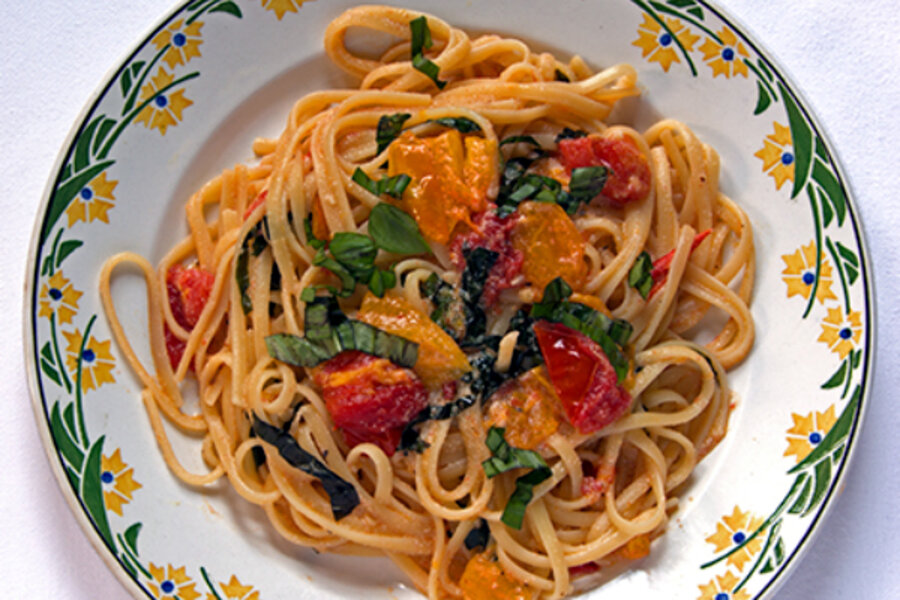Serves 4
1-1/2 pounds tomatoes, cut into large chunks
olive oil
1 to 2 large cloves garlic, minced
freshly ground black pepper
salt
1/2 cup ricotta cheese (I used partially skim)
1/2 cup chopped fresh basil leaves
12 ounces uncooked linguine or other long pasta
1. Start a large pot of water to cook the pasta. While water is heating, combine tomatoes with a drizzle of olive oil, garlic and a generous grind of black pepper in a large bowl and gently stir. Set aside. Do not add salt at this point; it will leech moisture from the tomatoes.
2. Cook the pasta for about 2 minutes less than the package directions call for, just short of al dente. Reserve 1-1/2 cups of pasta water when you drain it.
3. Meanwhile, cook the tomatoes. Warm 3 tablespoons of olive oil over medium heat in a large sauté pan. Add the tomatoes and garlic to the pan and season with a little salt. Cook, stirring occasionally, for about 5 to 6 minutes. The tomato chunks will begin to collapse and release their juices.
4. Add cooked pasta to the pan, along with the ricotta cheese and 3/4 to 1 cup reserved pasta water. Toss to combine, making sure to stir the ricotta into the pan juices. Cook for 1 to 2 minutes, until the sauce thickens slightly. Remove from heat and stir in basil. Taste and adjust seasonings with salt and pepper. Divide among 4 shallow bowls and serve.
Read the full post on Stir It Up!








